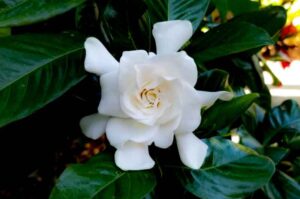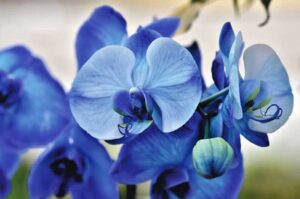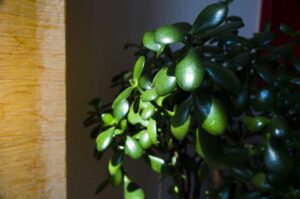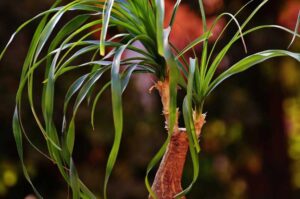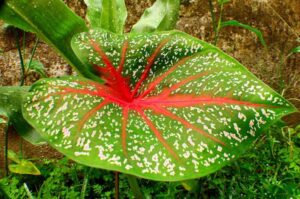How Long Do Hoya Flowers Last? (Explained)
Hoyas are considered to be the most eye-pleasing houseplants for their beautiful flowers. Hoya is a tropical climate plant that requires little attention to grows slow to moderate flowers. People are often confused about, how long do Hoya flowers really last. That is exactly what we are going to discuss today in this blog post.
Depending upon the species Hoya flowers can last starting from a few days to a few weeks. Species like Hoya multiflora, and Hoya kerrii lasts for a longer time like a few weeks. Whereas Hoya imperialis and Hoya lacunosa last only for a few days.
So it depends upon the variety, how long a Hoya flower will last. It is also somehow related to environmental factors. We will discuss it in the latter part of this blog post.
Hoya belongs to the Asclepiadaceae family in the plant kingdom. Their blooms are star-shaped structures and grow in an umbrella shape. The plant’s leaves are thick and succulent formation. These have little waxy blooms in a creamy-white and pink color scheme. They have a lovely fragrance and radiant foliage.
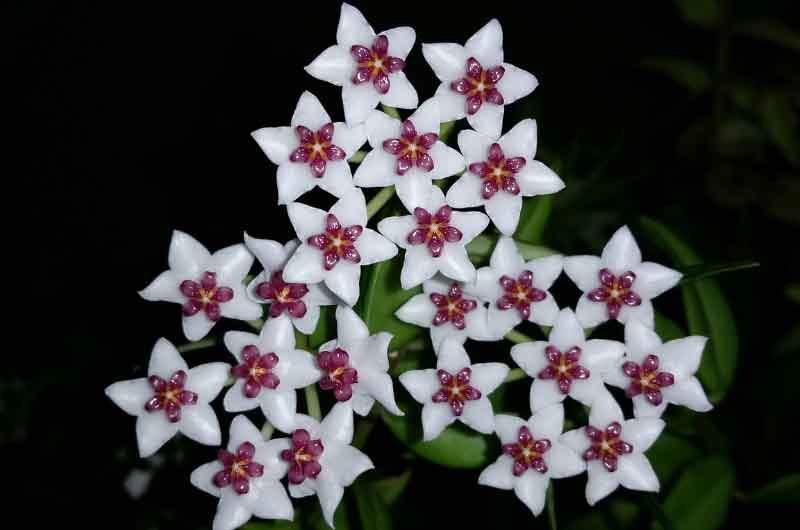
They generally persist in alluring red-toned colors. They have a great variety of glossy or matte textures. Some grow as fat and succulent whereas some are fuzzy. Taking about the buds, they beautifully swell and change to a healthy bloom.
Despite their beauty, these beautiful flowers require a specific amount of care and attention to thrive. There are a few tips that will help your Hoya plant to bloom quicker. And that is just what we will be discussing in today’s topic. Let’s get this party started:
How long do Hoya flowers last?
About how long a Hoya flower lasts, it all depends on two factors. Firstly which species of Hoya is it, and secondly, the environmental condition in which it is growing.
Hoya species like Hoya multiflora, Hoya shepherdii, Hoya tsangii, and Hoya kerrii have blooms that last long. They can even last for a few weeks (ideally 13 to 17 days).
Whereas some species like Hoya MacGillivrayi, Hoya imperialis, and Hoya lacunosa flowers only last for a very few days. Usually less than a week.
The longevity of Hoya blooms also depends upon the environmental condition. An ideal environmental condition with proper growing habits can definitely add some extra life to your blooms. But a harsh and unfavorable condition will surely decrease the longevity of your blooms.
The Ideal condition for the Hoya plants to bloom-
If you want your Hoya plants to grow healthier and stronger and blooms well, then there are a couple of things to bear in mind while dealing with Hoya plants.
Provide them with the ideal growing conditions, so that they can grow happily, and then they will also bloom heavily.
Ideal lighting conditions
To get the best result for Hoya flowers to bloom, they require bright, natural light but it should not be direct sunlight. Because they can not tolerate direct sunlight too often.
While the Hoyas can survive direct sunlight in the spring and fall, the summer direct light may scorch and bleach Hoya flowers.
So, Hoya plants need to get indirect sunlight every day for at least 6 hours.
Keep your plant in the west or south-facing window, so that they can get the ideal lighting condition. Place the plant in a corner near a north-facing entrance and an east-facing window.
Keep it out of the midday sun and away from hot, bright windows in the summer. You may need to shift yours to a more lit location during the colder winter months.
The Hoyas will benefit from artificial lighting. Maintaining a high amount of light will speed up the development of flowers. Try buying artificial grow lights for your Hoyas to make them bloom faster.
You may also like- Is my plant getting too much light? Effect of light and darkness on plant growth.
Proper Humidity Levels
Humidity is one of the Hoyas’ favorite things. Humidity is essential for the development of Hoya flowers, as it promotes the formation of stronger roots. Hoyas may still grow fast in moderate light if the humidity is high.
Enough air movement is necessary to keep the Hoya plants growing. There will be less fresh air if there are too many Hoyas crowded together with little space between them. Therefore, Hoyas should be kept apart.
Misting your plants, a couple of times a week should help them thrive. Fill the saucer halfway with water and stones to enhance humidity by making a pebble tray. Make sure the drain holes and/or the bottom of the container aren’t saturated before placing the plant on the stones. You can make your pebble tray by watching this video: HOW TO MAKE A HUMIDITY TRAY
Also using a humidifier can maintain the desired humidity levels for your Hoya plant.
Water requirement
Hoya plants survive well in low-water environments. It’s critical to water your Hoya plant systematically. Every morning, water your Hoya plants for good budding. This aids the plant’s ability to retain moisture throughout the day.
Sprinkle the water uniformly over the potting soil until it flows out of the container’s drain holes. Remove any surplus water from the saucer beneath the container.
Letting the pot become flooded is not a smart idea. Permit the soil to completely dry. Allowing the top one or two inches of soil to dry before re-watering is a good idea.
Use water that has been sitting in an open container for at least 24 hours. As a result, chlorine, fluoride, and other contaminants in tap water will not affect the flower. The excess chemicals will diffuse into the air over time.
Ideal temperature
Hoyas are exotic plants that grow well in comparatively warmer temperatures. Even certain plants thrive in mild daytime temperatures, yet flowers will not bloom if the temperatures drop below their optimum range.
Flower production reduces when the temperature drops below 60°F (16°C).
Temperatures in between the 60°F and 70°F are preferred by the indoor growers. While some Hoyas like temperatures below 80 degrees, some enjoy warmer temperatures.
The vast majority can withstand temperatures of up to 95°F. Always try to keep away from any air conditioning or heating vents that have a temperature variation.
Appropriate Potting soil
Potting soil is essential when it comes to growing Hoyas. If you don’t use the right potting soil for your Hoya, it won’t bloom. Planting Hoyas in a light, well-draining soil mix is recommended.
Combine two parts of potting soil, one part perlite, and one part orchid bark to make the soil mix for better bloom. Alternatively, you may also use pine bark, perlite, and peat moss mixture.
To reduce acidity, a pinch of dolomitic lime will have to apply. Pertile is a material that is used to lighten and increase the drainage capacity of potting soil.
Aerating additives such as pumice, perlite, or gritty sand can also be added to the succulent potting soil. Blend equal quantities of coconut coir and aerating materials into peat moss to enhance nutrient-holding capacity.
Ideal pot size
There are some advantages of growing hoya: it does not require regular repotting because the plant prefers to be root-bound. Hoya might grow well to develop flowers in terra cotta, plastic, or glazed ceramic pots as long as they include bottom drainage holes.
Choose a clean pot or hanging basket that is 1 to 2 inches bigger than the one you’re using now. Any repotting should be done when the hoya is actively developing, which is from spring to summer.
After repotting, hydrate the hoya and set it in a better light condition that it prefers.
Pest and disease-free environment:
Hoyas are susceptible to insect and disease infestations. Aphids, mealybugs, and spider mites are sap-sucking parasites that are attracted to Hoya. Several caterpillar species devour the flowers of the hoya. Whiteflies and thrips can become a nuisance and infect your Hoyas if spread in a large population.
Fungus infections can also affect the Hoya. Botrytis blight, which shows grey patches on the leaves can decay the flowers. The most common disease among Hoya growers is sooty mold. This black mold thrives on sticky leaves that have come into contact with plant saps or nectars.
To keep the Hoya plant healthy, use neem oil. This may be used to treat pests and illnesses of many kinds. Simply spray neem oil over the plant’s whole surface and common pests will be gone in no time. Insecticidal soaps, such as Safer soap, can be used to manage whiteflies and thrips. Use Monterey BT to get rid of caterpillars on your plants.
Wipe the mold away with a damp cloth. You may also sprinkle a diluted seaweed fertilizer on the moldy area to keep it from growing Sooty mold disease. Boris blight can be treated with a copper fungicide like Bonide Copper Fungicide.
Fertilizer
As the Hoya are leafy plants, it requires a lot of nitrogen to grow. New plants should be fertilized with a high nitrogen fertilizer regularly. Aside from nitrogen fertilizer, phosphorous and potassium fertilizer can also be used.
To encourage growth, use a balanced water-soluble fertilizer once or twice a month. Switch to a high-phosphorus fertilizer to encourage perfect blooming. Many people use a 5-10-5 water-soluble phosphorus fertilizer.
Keep in mind, always water before using fertilizer.
You may also like this article- How to make customized homemade fertilizers for indoor plants in simple steps.
How to take care of your Hoya after it blooms?
Apart from the above-mentioned steps, there are certain points to take care of while dealing with the post blooming of flowers.
- Never remove any vines from your plants because this would prevent or at the very least reduce blossoming.
- Only dry flowers or leaves are to be removed off from Hoya. Always cut a 2 or 3 leaf node. The place on the stem where the leaf joins the stem is known as a node.
- Dip the cutting’s base in rooting hormone.
- Place the cutting in a container of soilless mix that has roughly a third perlite or pumice added to it.
- Ensure that the water is fully soaked and that any surplus water is discarded. While the cuttings are rooted, don’t let the potting mix dry up entirely.
- Try to keep the plant in the ideal temperature and humidity. Give bright but indirect light, then only your Hoya will produce your desired flowers.
Follow these steps and your Hoya will be good to produce exclusive flowers.
Conclusion
There are so many other kinds of beautiful Hoyas to grow but every species has beautiful flowers to cherish. To get beautiful flowers, take the appropriate steps. All you have to do is be more cautious, vigilant, and compassionate toward these natural wonders. You’ll also be able to experience this nature’s beauty bloom right before your eyes in every area of your home.

